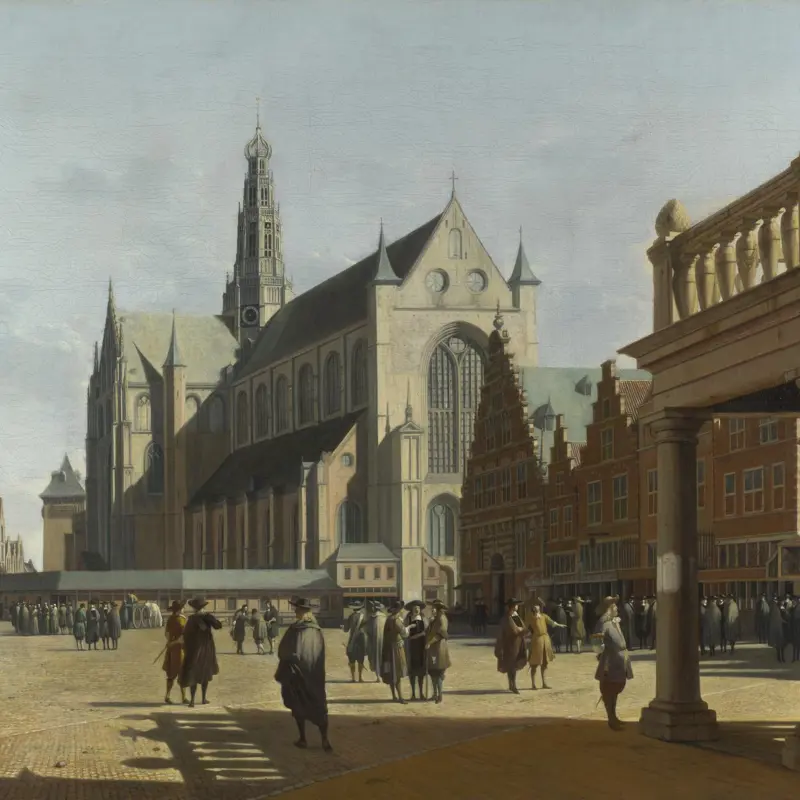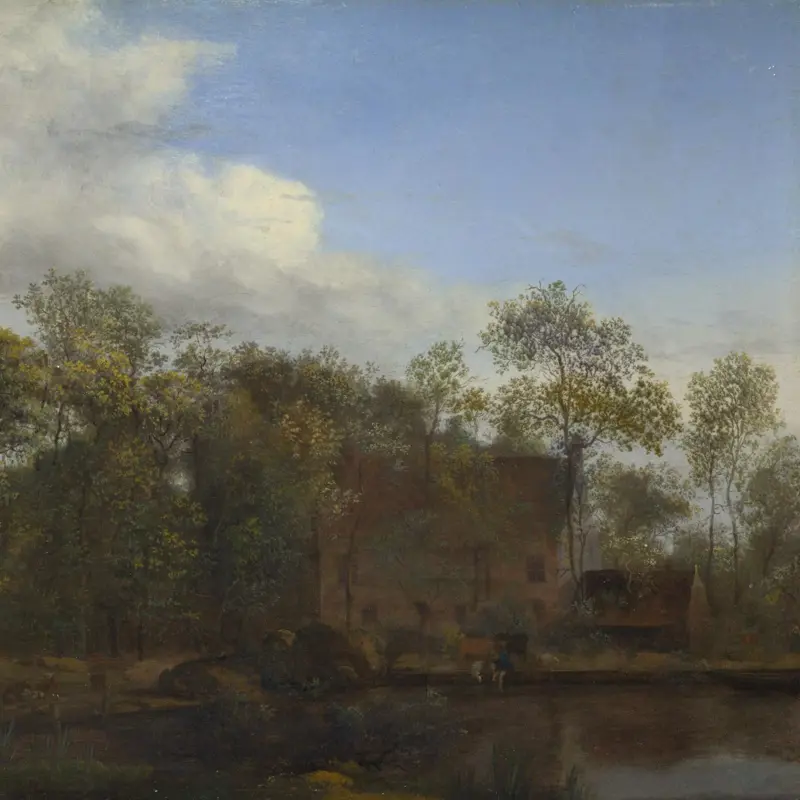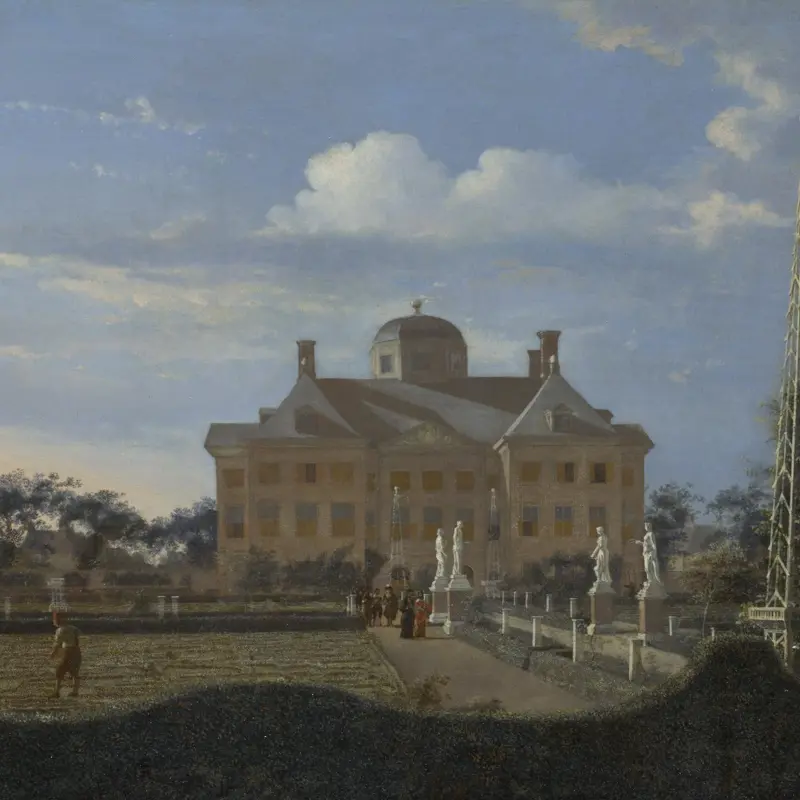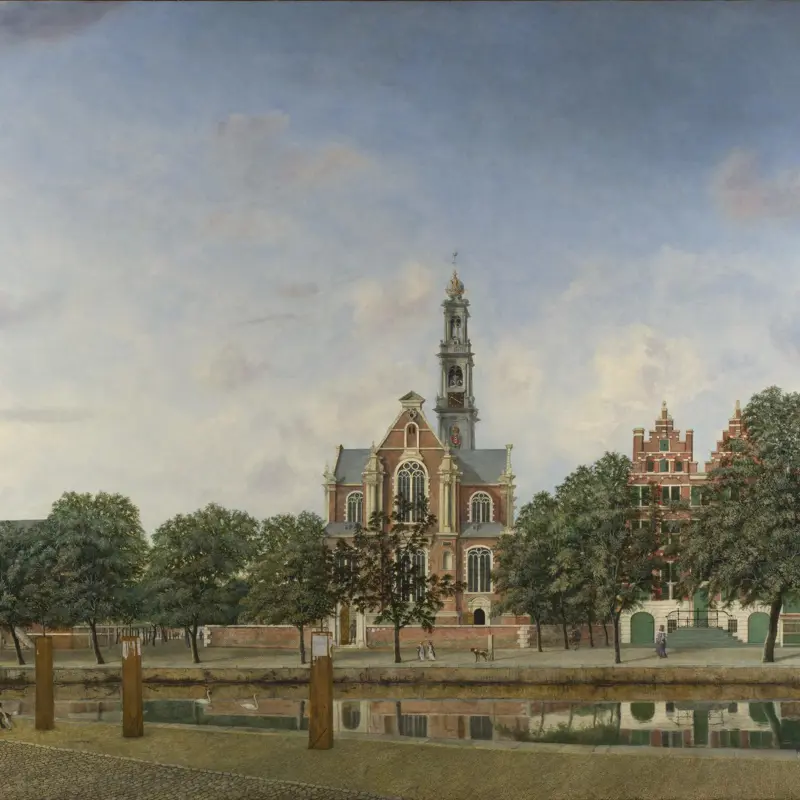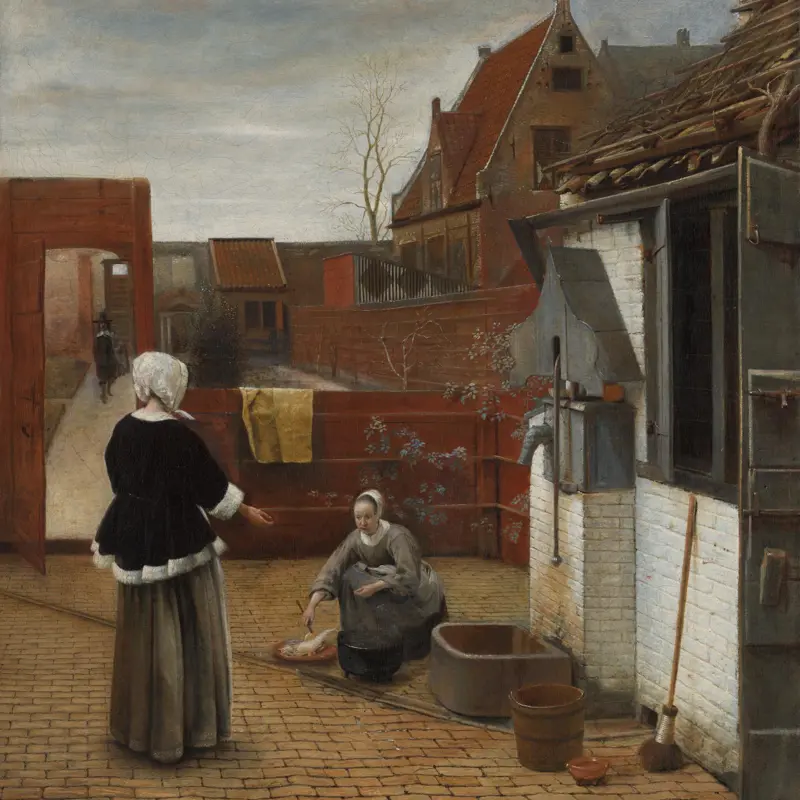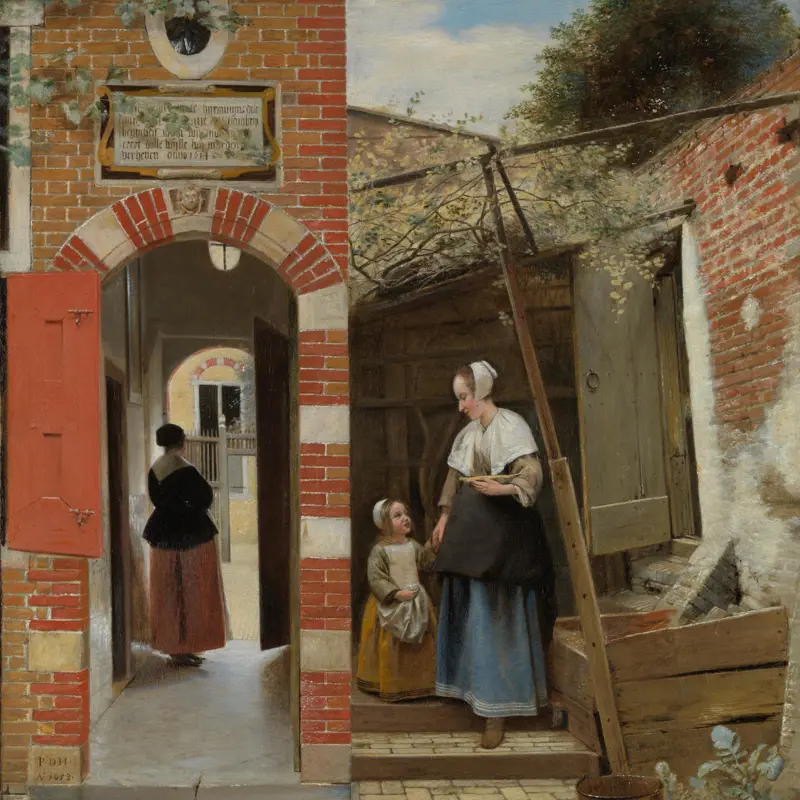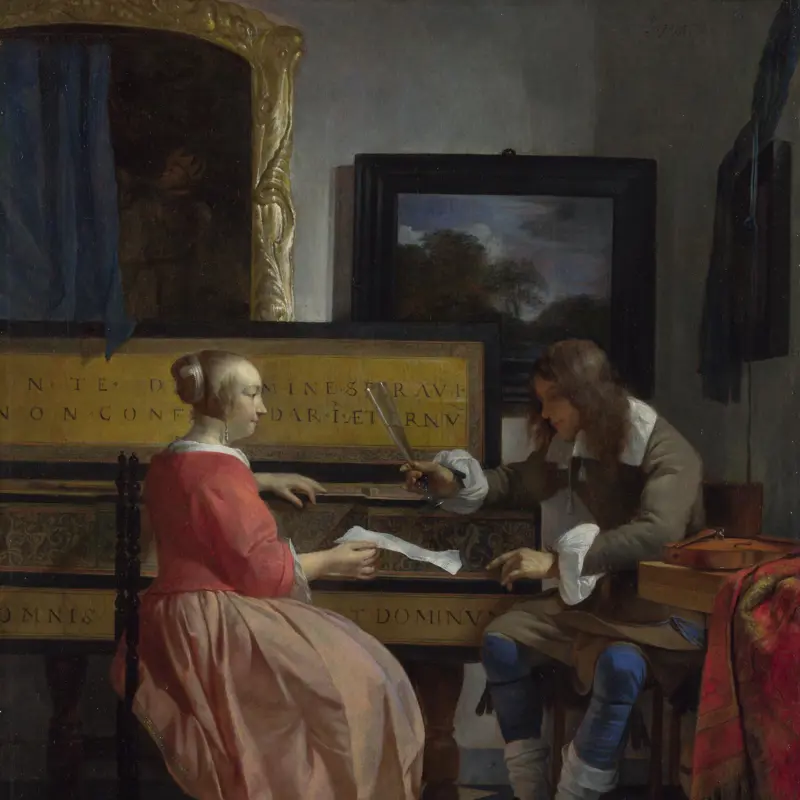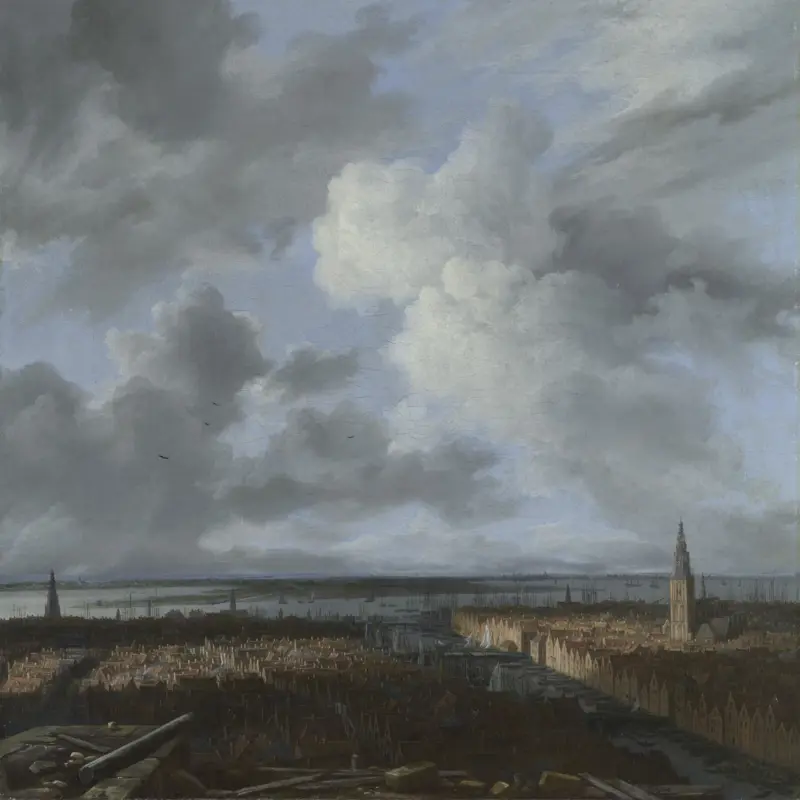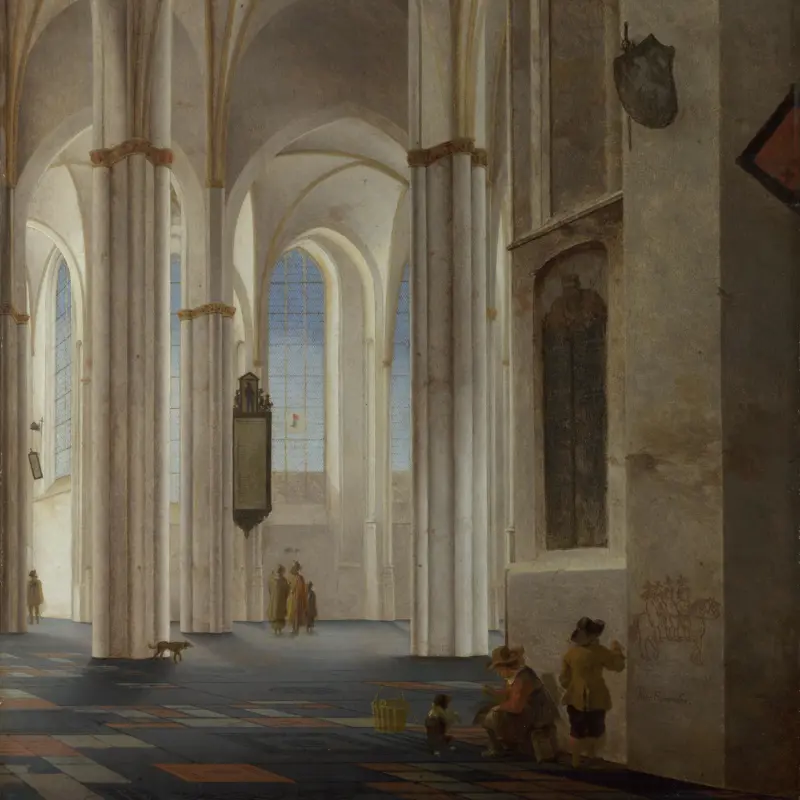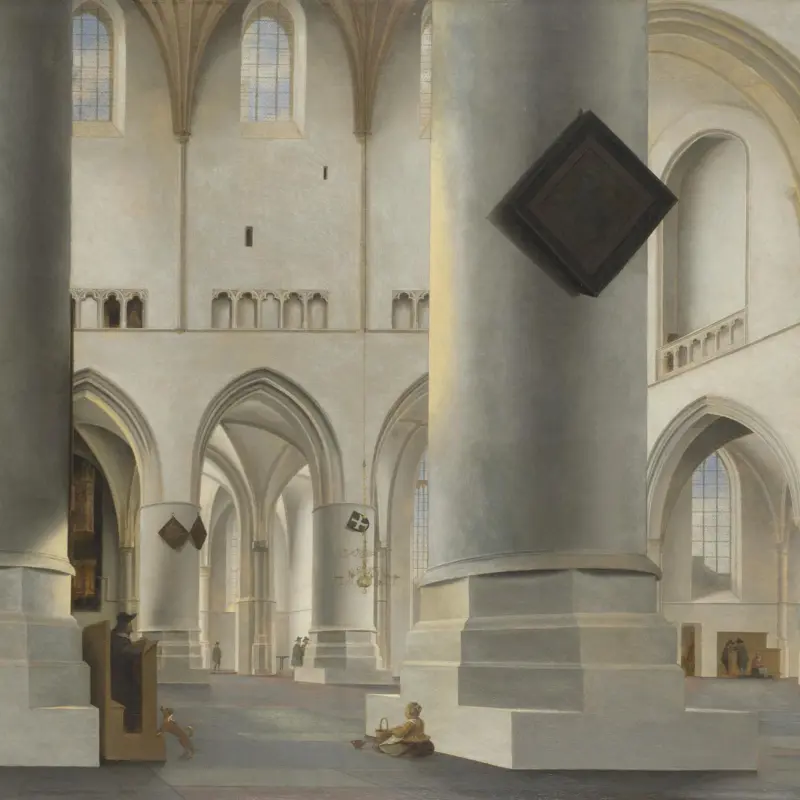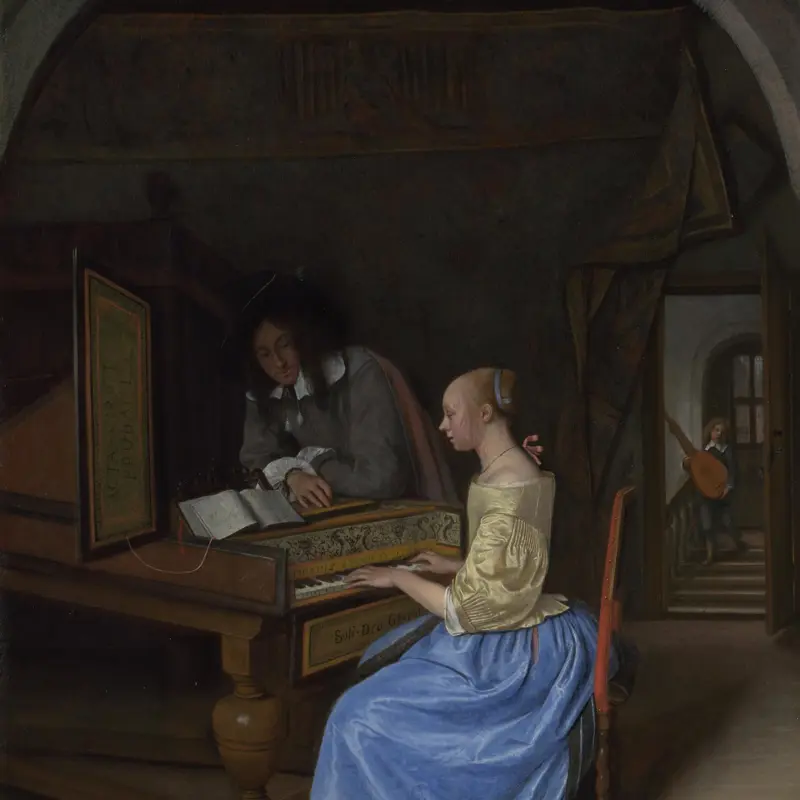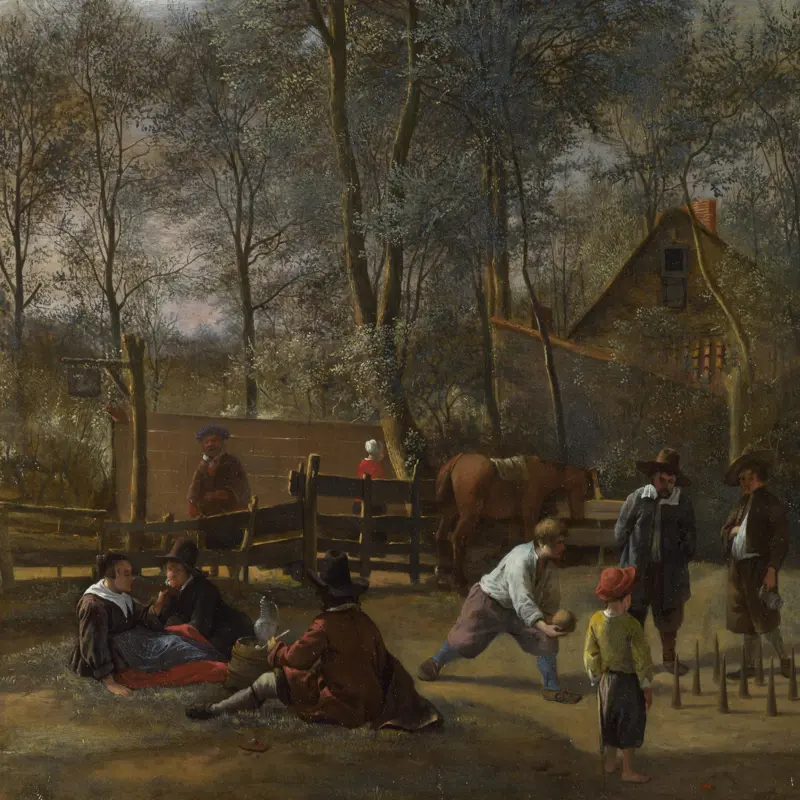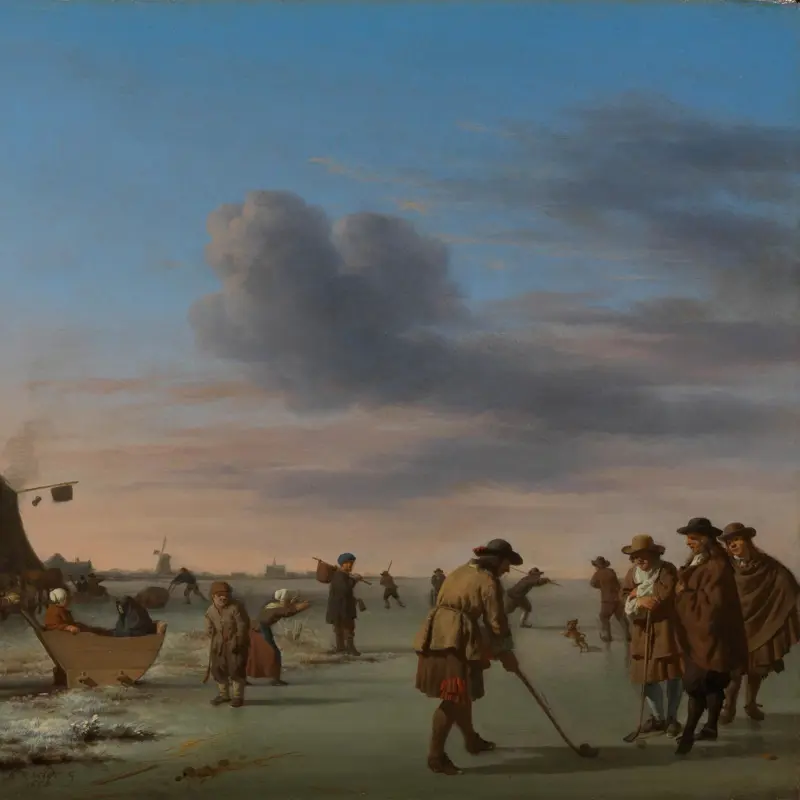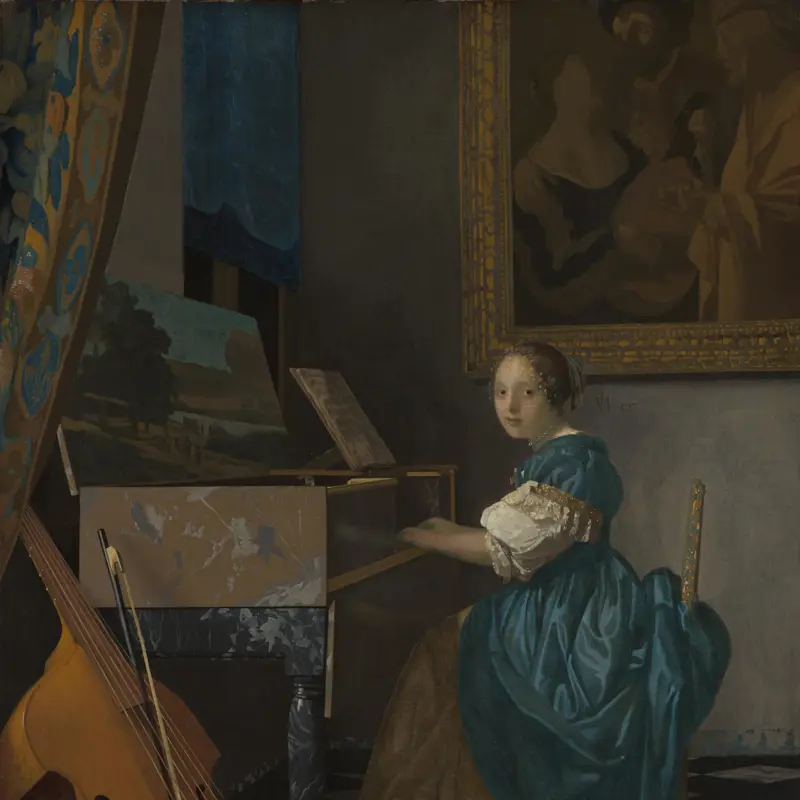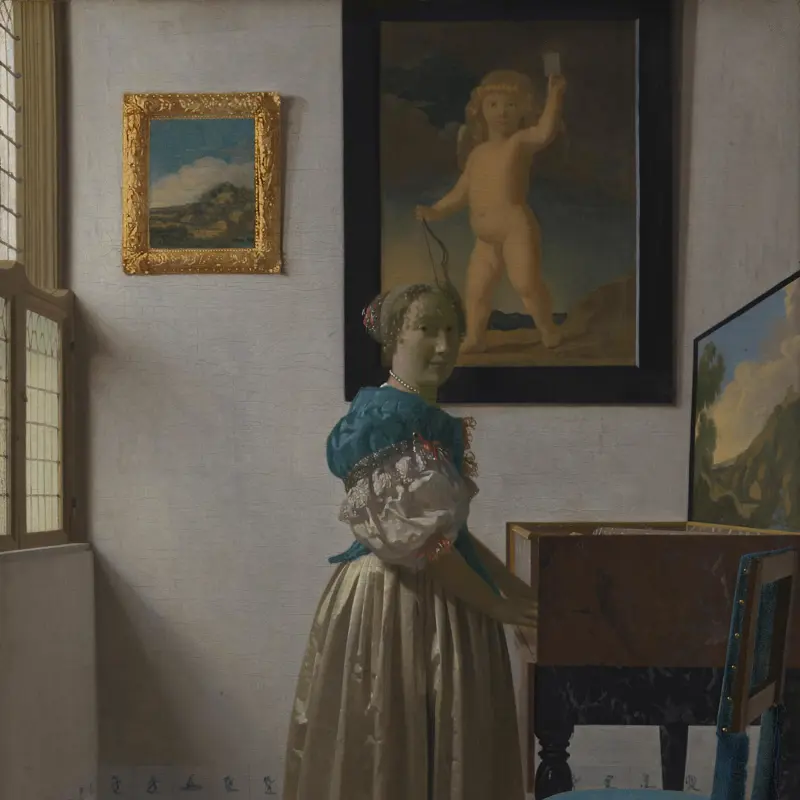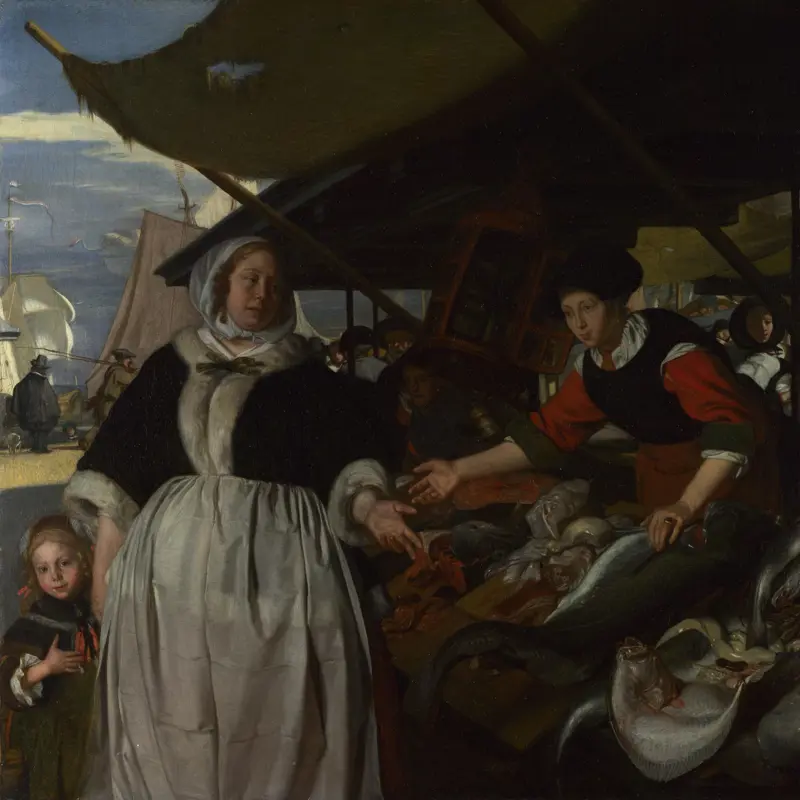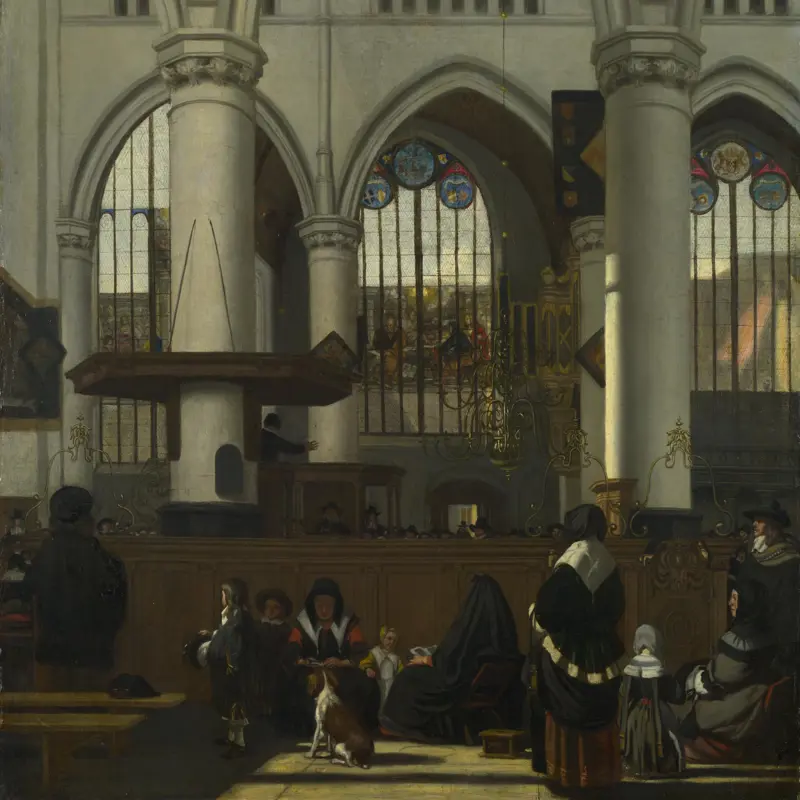During the 17th century, the Dutch Republic experienced one of the most powerfully creative periods in Western art. In the late 1500s, the mainly Protestant northern provinces of the Netherlands declared their independence from Catholic Spain. This shift meant that the Catholic Church was no longer the main supporter of the arts in this part of Europe. The fledgling new nation prospered and witnessed the flowering of a new type of art.
While traditional biblical and mythological paintings, known as 'history paintings’, continued to be popular, they now had to compete with entirely new genres. Many of these had been introduced by Flemish artists who in the early 1600s had moved to the Northern Netherlands to escape Catholic persecution. The new genres proved popular with a new class of wealthy citizens. In this room are landscapes, cityscapes, architectural views and scenes of everyday life. Their small scale reflects the fact that they were displayed in private homes.
Seventeenth-century Dutch paintings are often called 'realistic’, but artists altered nature to fit their artistic aims. These seemingly realistic scenes are therefore as much a product of the artists' creativity as any traditional history painting.


